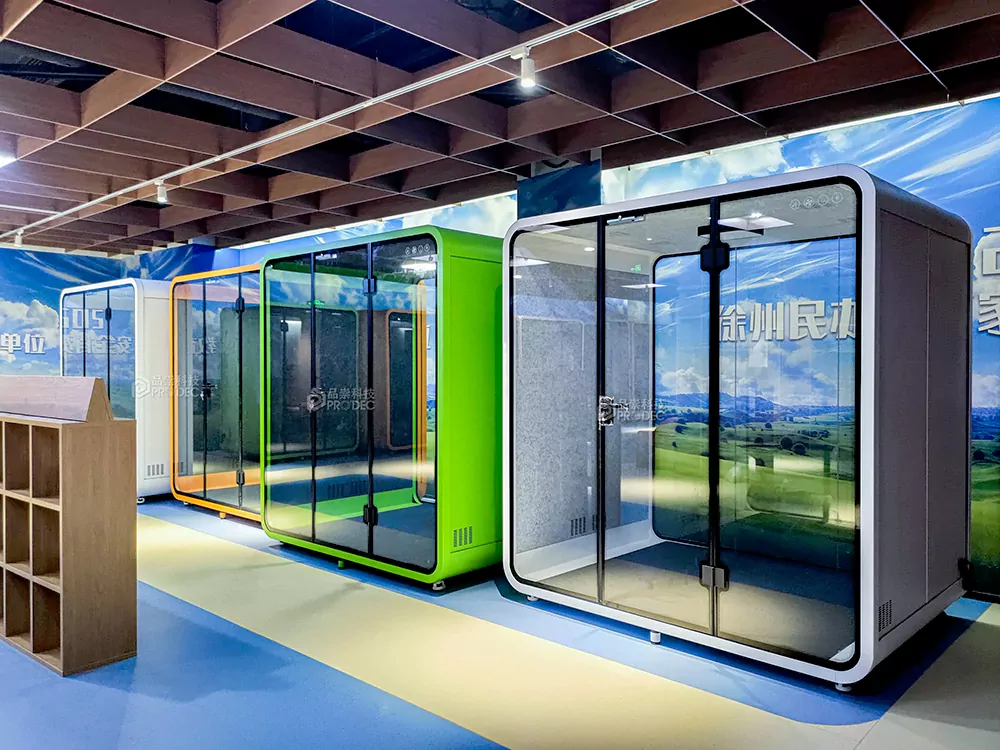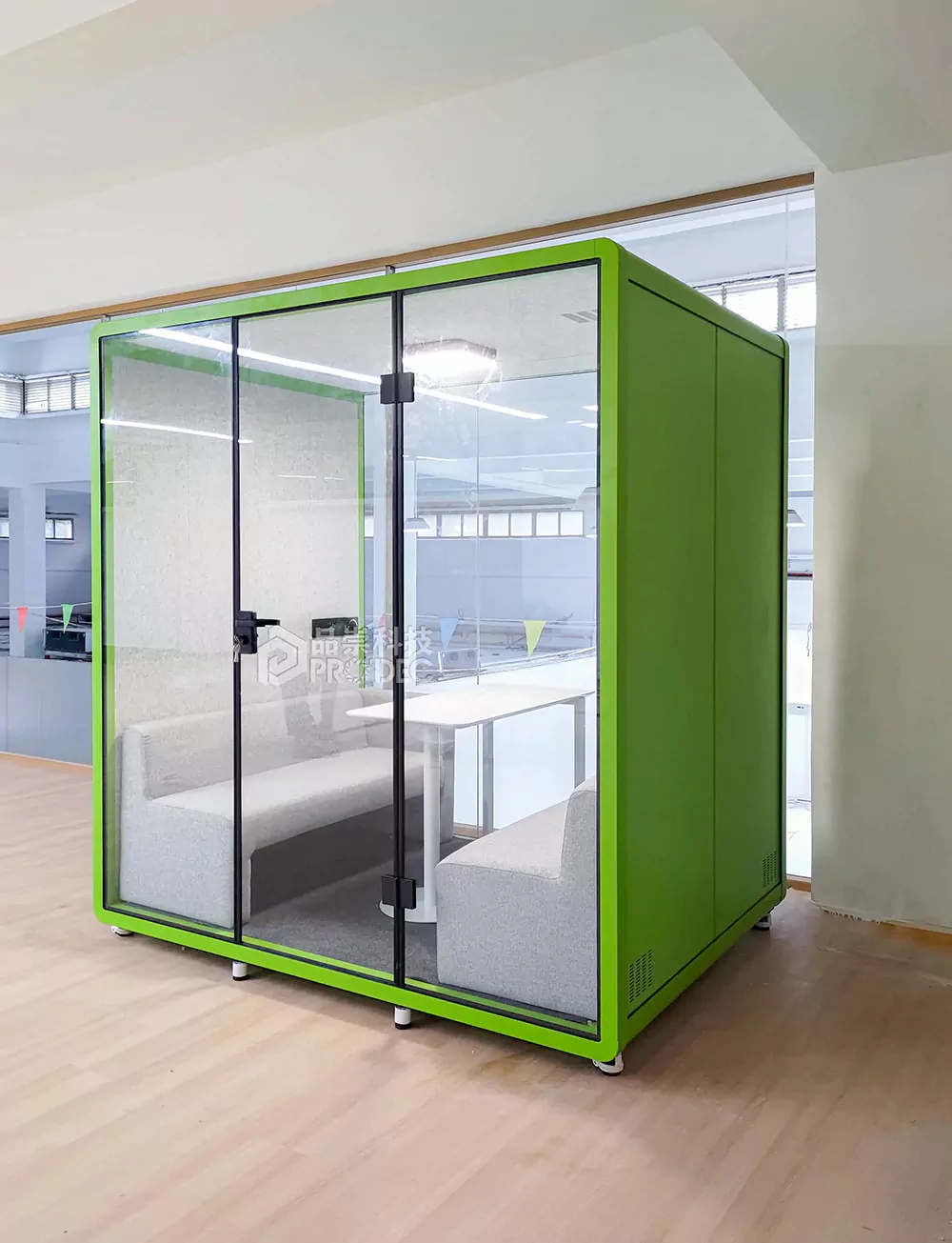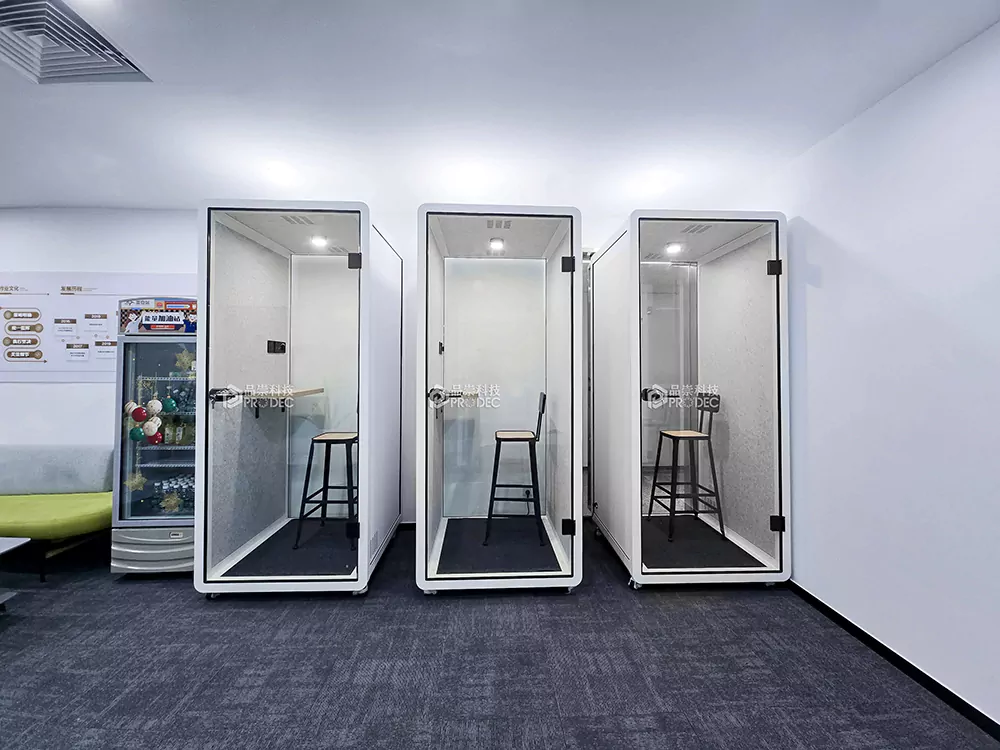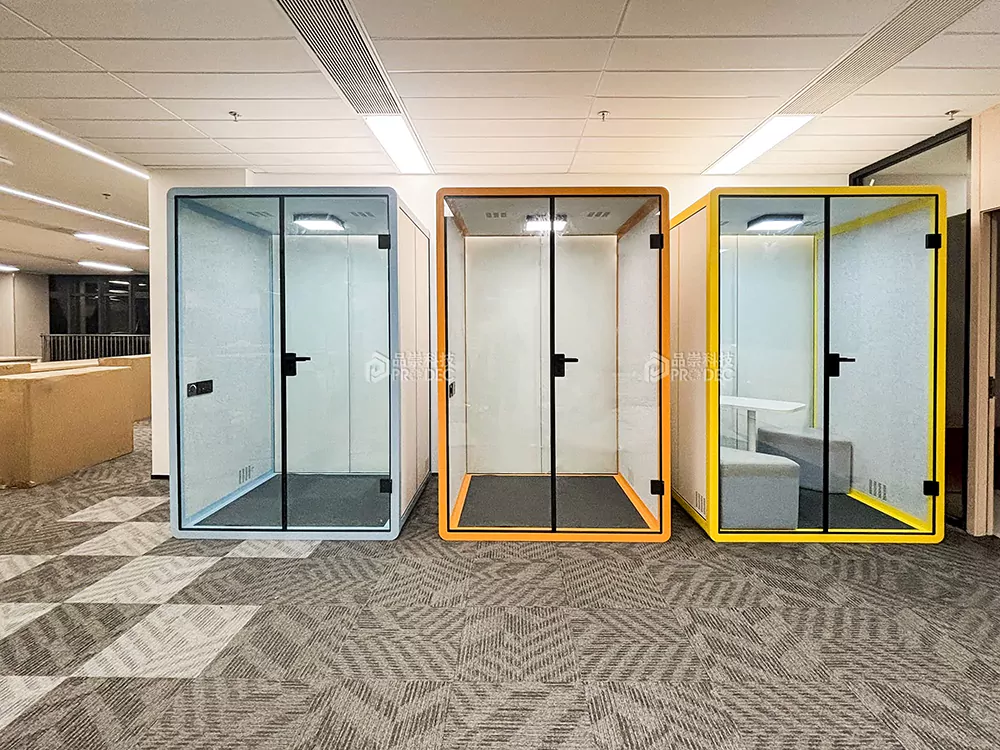Trend der Akustikkabine Live-Übertragungsraum
Why Streamers Need an Acoustic Booth for Reducing Background Noise in Streaming
In the fast-evolving world of live streaming, audio clarity is just as critical as video quality. Whether you’re hosting educational webinars, gaming sessions, or e-commerce product launches, background noise can severely degrade viewer experience and reduce audience retention. An acoustic booth for reducing background noise in streaming offers a scientifically engineered environment that isolates sound and ensures pristine audio output. These booths use multi-layered soundproofing materials, including high-density acoustic foam, mass-loaded vinyl, and decoupled wall structures to block external disturbances such as HVAC systems, traffic, or household activity.
Moreover, professional streamers often operate from shared or non-dedicated spaces where ambient noise is unavoidable. Traditional room treatments like rugs or curtains offer minimal improvement. In contrast, a dedicated acoustic booth creates a controlled micro-environment, enabling consistent broadcast quality regardless of external conditions. This makes it an essential investment for content creators aiming to deliver studio-grade productions without the overhead of building permanent facilities.
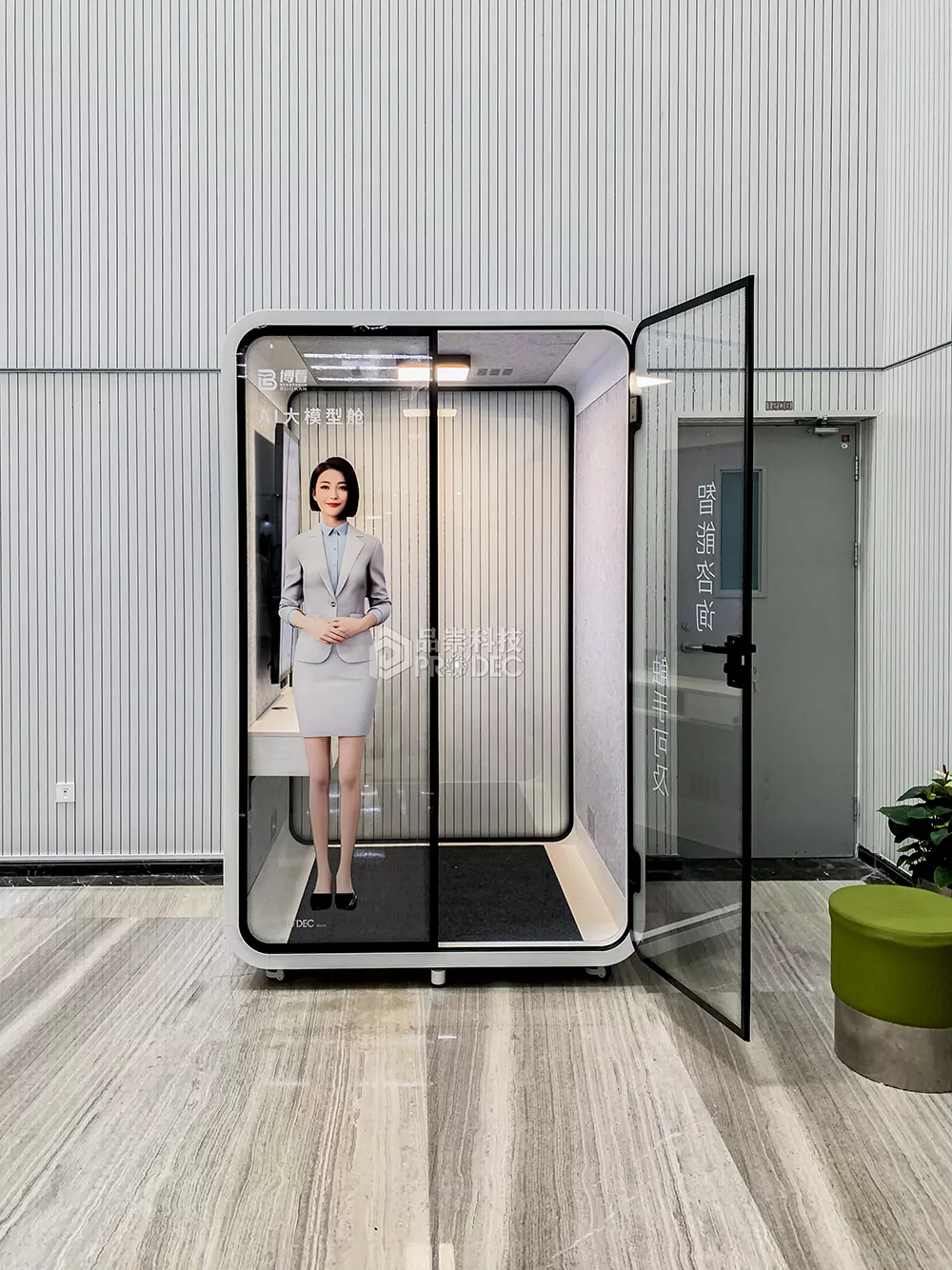
Step-by-Step Guide to Implementing an Acoustic Booth for Optimal Streaming Performance
Step 1: Assess Your Space and Streaming Needs
Before purchasing an acoustic booth, evaluate your available space and intended usage. Determine whether you need a single-person or dual-person configuration. Measure the floor area to ensure compatibility with standard booth dimensions (typically around 2.2m x 1.7m).
Step 2: Choose Between Modular and Pre-Fabricated Designs
Modular booths are ideal for users who may relocate or reconfigure their setup. They allow easy disassembly and transport. Pre-fabricated units offer superior sound isolation but require more permanent placement.
Step 3: Verify Sound Insulation Specifications
Look for booths that provide at least 30 dB of noise reduction. High-end models can achieve over 80% noise attenuation using imported acoustic absorption cotton and airtight seals.
Step 4: Integrate Ventilation Systems
Prolonged use demands proper airflow. Select booths equipped with cross-flow ventilation or silent fans to maintain air quality without introducing noise.
Step 5: Install Internal Lighting and Power Outlets
Ensure the booth includes LED lighting with adjustable color temperatures and built-in power sockets for cameras, microphones, and monitors.
Step 6: Mount Audio and Video Equipment
Use shock-mounted microphone arms and camera stands to prevent vibration transmission. Position lavalier or condenser mics within optimal speaking distance.
Step 7: Calibrate Acoustic Treatment Inside the Booth
Adjust internal panels to minimize reverberation. Bass traps in corners and diffusers on rear walls help balance frequency response.
Step 8: Connect to Multi-Network Aggregation Devices
For stable streaming, link the booth to a multi-WAN router or cellular bonding device to prevent dropouts during live broadcasts.
Step 9: Test Audio Output and Background Rejection
Run test streams using software like OBS Studio or vMix. Analyze spectrograms to confirm background noise suppression and vocal clarity.
Step 10: Optimize Workflow with Real-Time Data Monitoring
Advanced booths feature integrated data dashboards showing viewer count, bandwidth usage, and system health—enabling real-time performance adjustments.
Comparative Analysis: Standard Room Setup vs. Acoustic Booth for Reducing Background Noise in Streaming
| Merkmal | Standard Room Setup | Akustische Kabine |
|---|---|---|
| Noise Reduction (dB) | 5–15 dB | 30–45 dB |
| Sound Reflection Control | Limited (requires additional treatment) | High (built-in absorptive materials) |
| Installationszeit | Variable (days to weeks) | 3 hours (modular assembly) |
| Mobilität | Low (fixed location) | High (equipped with wheels) |
| Kosteneffizienz | Moderate (ongoing maintenance) | High (one-time purchase, reusable) |
Key Features That Define a High-Performance Acoustic Booth
A top-tier acoustic booth for reducing background noise in streaming integrates several advanced engineering principles. First, its structural integrity relies on a steel-framed enclosure with anti-rust coating and waterproof panels, ensuring durability across environments. Second, the interior lining uses ISO-certified sound-absorbing materials that eliminate echo and standing waves. Third, electromagnetic shielding prevents interference with wireless mics or Wi-Fi signals.
Modern iterations include smart glass partitions that transition from transparent to frosted upon entry, enhancing privacy. Integrated cable management systems keep wiring organized and safe. Additionally, some models support IoT-enabled controls for lighting, temperature, and remote monitoring via mobile apps—making them suitable for enterprise-level deployment.
User Experience and Real-World Feedback on Acoustic Booths
“I used to record voiceovers in my closet wrapped in blankets. After switching to a professional acoustic booth, my clients immediately noticed the difference in audio fidelity. Background hum from appliances is completely gone.” — Sarah K., Voiceover Artist
“Our training team uses dual-person booths for instructor-led sessions. The modular design allowed us to install four units in one conference room. Data tracking shows a 40% drop in viewer dropout rates since implementation.” — Mark T., L&D Manager at TechEdu Corp
These testimonials highlight how an acoustic booth transforms not only technical performance but also business outcomes by improving engagement and professionalism.
Comparison of Leading Acoustic Booth Models in 2025
| Modell | Sound Attenuation | Ventilation System | Smart Features | Price Range (USD) |
|---|---|---|---|---|
| Polyv Booth 2.0 | 80% noise reduction | Cross-span exhaust flow | Triple-screen dashboard, dual PC isolation | $12,000 |
| SoundShield Pro X | 30+ dB isolation | Silent fan with timer | Auto-on lighting, motion sensor | $7,999 |
| StreamHaven Mini | 25 dB reduction | Passive vents | Basic USB hub | $4,500 |
Future Trends: Smart Integration and Sustainability
The next generation of Akustikkabinen for reducing background noise in streaming will leverage AI-driven acoustic calibration. Machine learning algorithms will analyze room impulse responses and automatically adjust equalization settings in real time. Furthermore, sustainability is becoming a key focus—manufacturers are adopting recyclable metals, low-VOC adhesives, and biodegradable insulation materials to meet eco-certification standards.
IoT integration enables centralized control of multiple booths across campuses or studios. Cloud-based analytics track usage patterns, predict maintenance needs, and optimize energy consumption. As hybrid work continues to grow, these intelligent, sustainable solutions will become standard infrastructure for digital communication hubs.
Conclusion: Elevating Streaming Quality Through Engineered Silence
Eine acoustic booth for reducing background noise in streaming is no longer a luxury—it’s a necessity for professionals committed to excellence. From enhanced sound clarity to workflow efficiency and brand consistency, the benefits are measurable and impactful. By following the implementation steps outlined above and selecting a model that matches your operational scale, you can create a broadcast environment that rivals traditional studios—at a fraction of the cost and complexity.
本文由人工智能技术生成,基于公开技术资料和厂商官方信息整合撰写,以确保信息的时效性与客观性。我们建议您将所有信息作为决策参考,并最终以各云厂商官方页面的最新公告为准。

